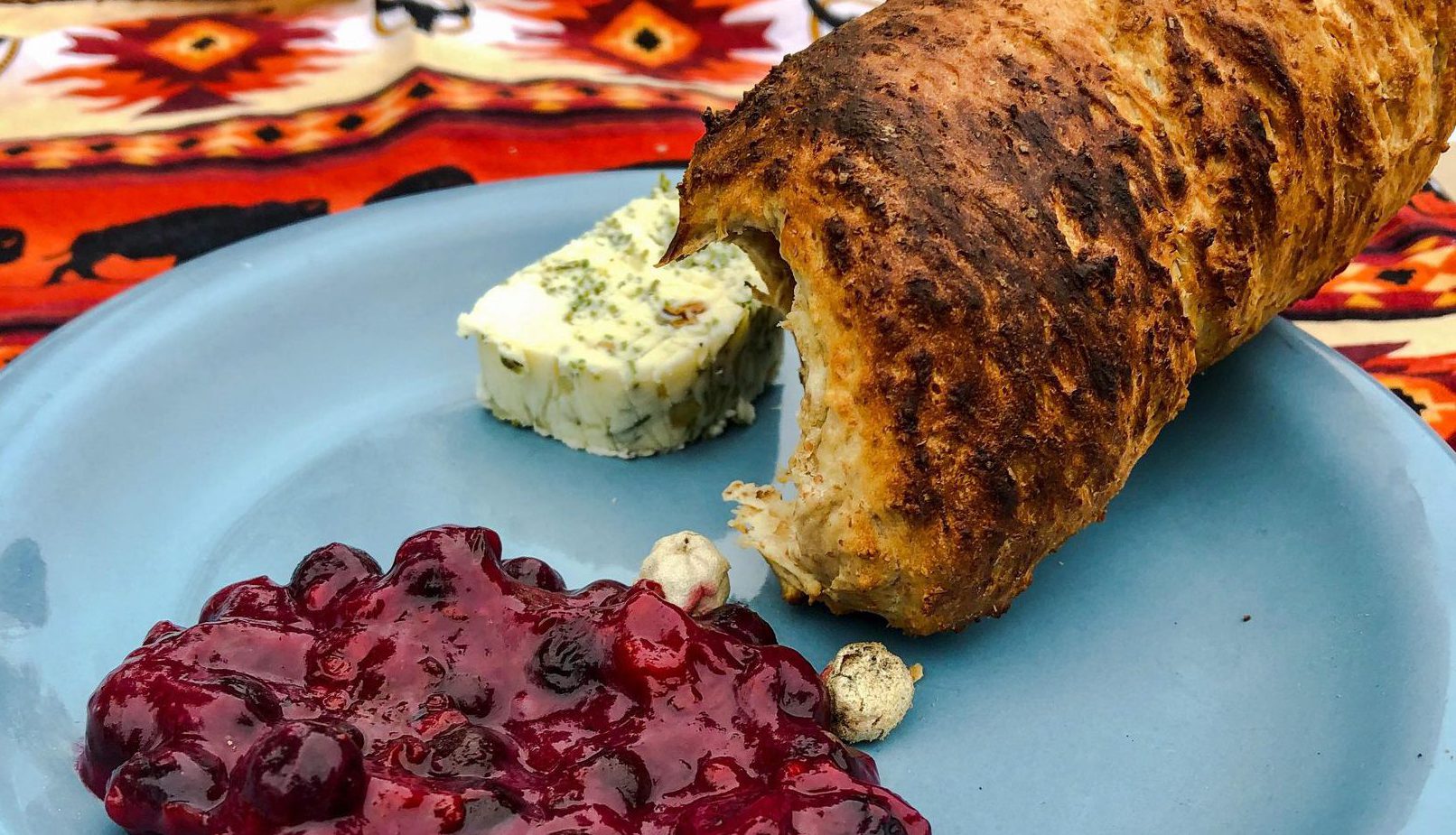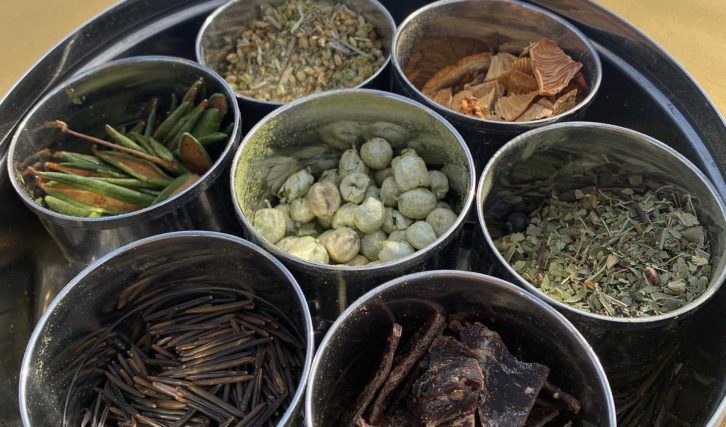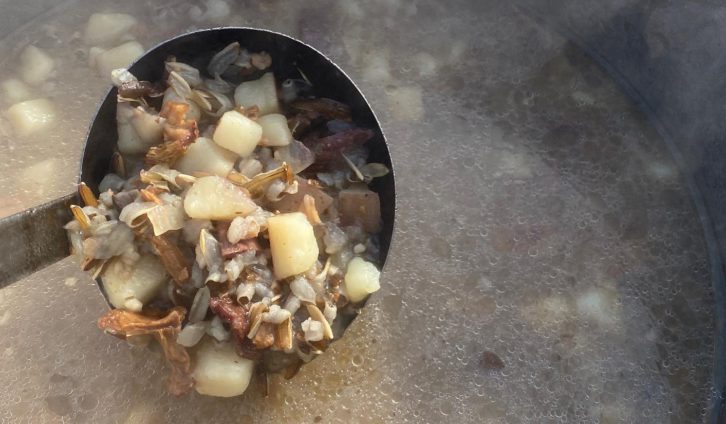Reclaiming Indigenous ways of knowing food
Métis chef discusses traditional cuisine, food insecurity crisis

caption
Bannock on a stick with berry stew and spruce tip butter.Food insecurity is nothing new in Canada — especially in First Nations, Inuit and Métis communities.
“Perhaps we need to be more compassionate and understanding with the fact that food prices have been high in remote and northern Indigenous communities for a long, long, long time,” said chef Jenni Lessard. “So the rest of Canada is maybe seeing it now.”
Lessard identifies as a citizen of the Métis Nation of Saskatchewan and lives on Treaty Four Territory in the Qu’Appelle Valley near Regina.
“But it’s something that people have been dealing with in communities for a long time,” she said, adding, “it’s only when the other parts of the population start complaining about it when it becomes a societal problem.” Related stories

caption
Chef Jenni Lessard lives on Treaty Four territory in Saskatchewan.The final report of the First Nations Food, Nutrition and Environment Study was released in 2019. The study was a decade long and revealed that 48 per cent of First Nation households have difficulty putting food on the table.
This number only grows in families with children. The study finds that traditional food access does not meet communities’ current needs. More than half of the adults reported that harvesting traditional food has been affected by climate change or industry-related issues.
“People have been disconnected and not being allowed to hunt, fish in these traditional ways,” said Lessard. “So this has to be re-learned — that’s why Indigenous communities are taking small steps to include traditional food back to their diet and reclaim what was lost.”
For people following a traditional Indigenous diet on a budget, Lessard suggests finding others who are also looking to eat culturally appropriate food through Facebook groups or Native Friendship Centres, which provide guidance.
“I think one thing you can do is you can try to connect with people in your community that you know, are using the same ingredients and are on the same page,” she said, adding they’ll often “ask if they can come with you when looking for ingredients.”

caption
Indigenous ingredients such as bison dry meat, wild rice, muskeg tea and yarrow.Lessard, however, acknowledges the limitations of harvesting.
“Maybe your housing is insecure and you don’t always have access to a freezer — like what are you going to do with that stuff that you’ve gone out and harvested?”
She explained that Indigenous ways of knowing can provide help here, for different Indigenous groups are providing workshops in dehydrating food and other ways of using protein.
“I didn’t grow up eating bison but my ancestors did and they would have used every single part of the bison so I think that’s coming back and people are getting a little less squeamish about using parts of the animal that they may not have thought to use before,” said Lessard.
Engaging younger generations with traditional ways of eating is also a current challenge.
“I have done classes where I’m working with youth who’ve maybe never eaten traditional foods. And it’s very difficult to kind of help them get the like for that back,” said Lessard. When most people are eating fried and heavily processed foods, and then “good, clean food without a lot of additives,” it can be “funny at first.”

caption
Bison Dry Meat Soup cooked outside in the winter.Lessard is the interim executive director of the Indigenous Culinary of Associated Nations, an organization that is growing and showing the multifaceted reality of Indigenous cuisine.
“We are looking to add more people to our network,” she said, adding all members of Indigenous movements who want to join are welcome.
Its three main pillars are to connect communities, share traditional teachings and increase Indigenous visibility in the culinary scene.
About the author
Natalia Tola
Natalia Tola was born and raised Ecuador. She is pursuing a four year Bachelor of Journalism (Honours) with a minor in Contemporary Studies....
